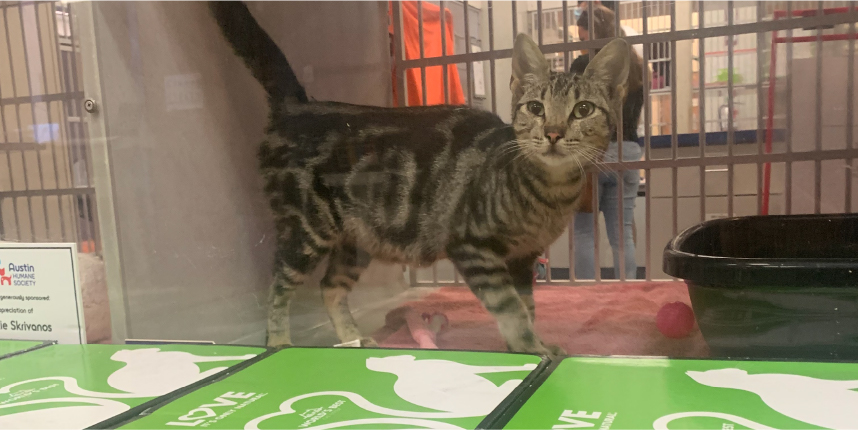THIS MIGHT BE WHY YOUR CAT HAS STOPPED USING THE LITTER BOX
Follow these four pro tips to prevent the majority of litter box issues from starting in the first place.

Everything You Should Know Before Fostering a Shelter Cat
Thinking about taking in a new companion? Fostering can be a great option for those able to care for pets on a short-term basis.
Fostering helps reduce the population in animal shelters, socialize animals and help prepare them for their forever home. It’s also an extremely rewarding and fulfilling experience to provide for the animals who need it most, and watch them learn to trust again.
What to Know Before Fostering a Cat

Find the Right Shelter and Get in Touch
Do research to find which local shelter is the best fit for you in terms of fostering. Some specialize in specific breeds or pets with specific needs, so it’s important to find one that fits your interests and abilities.
Understand the Expectations of Your Foster Program
Most shelters have their own unique programs for fostering. Some programs will support certain costs like healthcare or even food, while others rely on foster parents to help cover these costs. Take note of what procedures are in place in the case of emergencies, and what steps you’ll need to follow should one occur.
In some cases, fostered kittens require bottle feeding. Senior or special-needs cats may also require additional care and medications. If you are unwilling or unable to provide these additional measures, you should notify the shelter ahead of time so they can plan accordingly.

Prepare Yourself Emotionally

While the process of taking in and caring for a new cat is exciting and rewarding, letting them go when they’re ready for adoption can be extremely difficult. “Foster fails” are a cliché for a reason – many foster parents aren’t capable of letting their pets leave after spending so much time with them.
Before fostering, ask yourself if you’re ready to handle the emotion requirements of fostering. Many foster pets have behavioral issues from their unstable environments. Your home could be damaged from scratching or inappropriate bathroom use.
Prepare Your Home to Foster a Cat

1. Create a Space Just for Them
When taking in any new pet, you should create a space with ample privacy for them to feel safe and comfortable. This space should include the necessities like food and water, a litter box and a comfortable place to sleep and explore.
Giving your foster cat this space will allow them time to grow accustomed to the new smells and sounds associated with your home, before having to learn to interact with new people and pets. It will also help to prevent any territorial issues between pets by giving them the chance to grow used to each other’s scent and presence before meeting.

2. Ensure All Pets are Up-to-Date on Medical Care
Many fosters are kittens or special-needs cats, both of which are extremely susceptible to contracting viruses. In turn, you’ll also want to protect your current pets from any germs your shelter cat may bring into your home. Schedule an appointment with your vet shortly before bringing home your shelter cat, just to make sure all resident pets are up-to-date on their vaccinations.

3. Keep A Close Eye on Your Resident Pets
While fostering can be a positive, fulfilling experience, it can also be stressful. Your pets may not take kindly to the introduction of new cats or may respond better to senior cats versus kittens. Monitor your pet’s eating and bathroom habits, in addition to their overall appearance. If you begin to notice any signs of stress, contact your foster program to discuss options for rehoming your foster.

4. Stock Up on Supplies
One way to reduce your own stress is to have enough supplies on hand in case of bathroom accidents, messes or other unforeseen issues. Ask the shelter what food and litter your shelter cat is used to – continuing to use these will help reduce digestive issues and litter aversion.
With the proper preparation, fostering can be a success for both you and a shelter cat. They’ll find a forever home and you’ll get to experience the joy of watching them learn and grow. If you’re leaning towards adoption rather than fostering, get our A-Z Guide to help prepare you.



